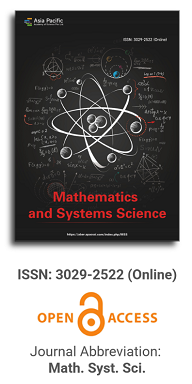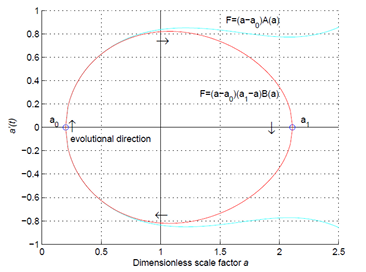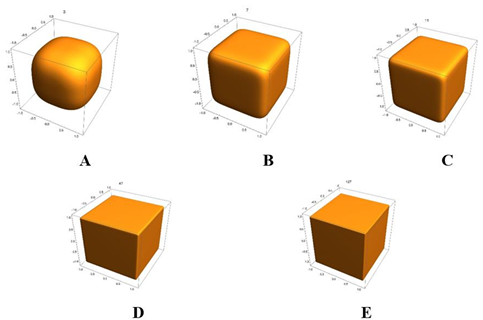


The numerical investigation of the time-dependent Couette flow of dusty Casson fluid generated by parallel Riga plates
Vol 3, Issue 2, 2025
Download PDF
Abstract
This research explores the impact of the relative magnetic effect on the Couette flow of dusty Casson fluid between two parallel Riga plates. The mathematical model is based on a set of partial differential equations that describe the behavior of the dusty Casson fluid in interaction with the Riga plate. To convert this system of equations to its dimensionless form, appropriate transformations are used, and to solve this system numerically, explicit finite difference methods are applied to it. A graphical representation has been presented by using MatLab software for a comprehensive understanding of the effect of various non-dimensional parameters such as pressure gradient parameter (α), Casson parameter (β), modified Hartmann number (Ha), fluid concentration parameter (R), particle mass parameter (G), Eckert number (Ec), Prandtl number (Pr), and temperature relaxation time parameter (L0) on the velocity distributions u (or up) and on the temperature distributions θ (or θp), including shear stress and Nusselt number for both clean and dust fluid particles. The impacts of these parameters on the above-mentioned distributions have been discussed with their physical significance, taking the variation of any one of those parameters and with fixed values of α =1, β = 2, Ha=1, R = 0.5, G = 0.5, Ec = 0.01, Pr = 0.71, and L0 =0.8. The results reveal significant effects of relative magnetic fields on both clean fluid and dust particle motion.
Keywords
References
- Casson N. A Flow Equation for Pigment Oil Suspensions of the Printing Ink Type. In: Mill CC (editors). Rheology of Disperse Systems. Pergamon Press; 1959. pp. 84–102.
- Gailitis A, Leilausis O. On a possibility to reduce the hydro dynamical resistance of a plate in an electrode. Appl. Magneto hydrodyn. 1961; 12: 143–146.
- Saffman PG. On the stability of laminar flow of a dusty gas. J. Fluid Mech. 1962; 13(1): 120–128.
- Eldabe NTM, Salwa MGE. Heat transfer of MHD Non-Newtonian Casson Fluid Flow between two Rotating Cylinders. Journal of the Physical Society of Japan. 1995; 64: 41–64.
- Fang T. A note on the incompressible Couette flow with porous walls. International Communication in Heat and Mass Transfer. 2004; 31(1):31–41.
- Boyd J, Buick JM, Green S. Analysis of the Casson and Carreau-Yasuda non-Newtonian blood models in steady and oscillatory flows using the lattice Boltzmann method.Physics of Fluid. 2007; 19: 093103.
- Damseh RA. On Boundary Layer Flow of a Dusty Gas from a Horizontal Circular Cylinder. Brazilian Journal of Chemical Engineering.2010; 27(4): 653–662.
- Makinde OD, Chinyoka T. MHD transient flows and heat transfer of dusty fluid in a channel with variable physical properties and Navier slip condition. Computers and Mathematics with Applications. 2010; 60(3): 660–669.
- Eguia P, Zueco J, Granada E, Patino D. NSM solution for unsteady MHD Couette flow of a dusty conducting fluid with variable viscosity and electric conductivity. Applied Mathematical Modelling. 2011; 35(1): 303–316.
- Hayat T, Shehzad SA, Alsaedi A. Soret and Dufour Effects on Magnetohydrodynamic (MHD) Flow of Casson Fluid. Applied Mathematics and Mechanics. 2012; 33: 1301–1312.
- Nadeem S, Haq RU, Akber NS, Khan ZH. MHD three-dimensional Casson fluid flow past a porous linearly stretching sheet. Alexandria Engineering Journal. 2013; 52(4): 577–582.
- Ramesh GK, Gireesha BJ. Flow Over a Stretching Sheet in a Dusty Fluid With Radiation Effect. Journal of Heat Transfer. 2013; 135(10): 102702.doi: 10.1115/1.4024587
- Mukhopadhyay S, Ranjan De P, Bhattacharyya K, Layek GC. Casson fluid flow over an unsteady stretching surface. Ain Shams Engineering Journal. 2013; 4(4): 933–938.
- Attia HA, Aboul-Hassan AL, Abdeen MAM, El-Din Abdin A. MHD flow of a dusty fluid between two infinite parallel plates with temperature dependent physical properties under exponentially decaying pressure gradient. Bulgarian Chemical Communications. 2014; 46(2): 320–329.
- Pramanik S. Casson fluid flow and heat transfer past an exponentially porous stretching surface in presence of thermal radiation.Ain Shams Engineering Journal. 2014; 5(1): 205–212.
- Ramesh K, Devakar M. Some analytical solutions for flows of Casson fluid with slip boundary conditions. Ain Shams Engineering Journal. 2015; 6(3): 967–975.
- Abbas T, Ayub M, Bhatti MM, et al. Entropy generation on nanofluid flow through a horizontal Riga plate. Entropy. 2016; 18(6).
- Raju CSK, Sandeep N, Sugunamma V, et al. Heat and Mass Transfer in Magnetohydrodynamic Casson Fluid over an Exponentially Permeable Stretching Surface. Engineering Science and Technology. 2016; 19(1): 45–52.
- Awais M, Malik MY, Hussain A, et al. A Computational Analysis Subject to Thermophysical Aspects of Sisko Fluid Flow over a Cylindrical Surface. The European Physical Journal Plus. 2017; 132: 1–16. doi: 10.1140/epjp/i2017-11645-y
- Isa SM, Mohammad NF. Boundary Layer Flow of Dusty Fluid on a Stretching Sheet of Another Quiescent Fluid.Journal of Physics: Conference Series. 2017; 819(1).
- Jalil M, Asghar S, Yasmeen S. An Exact Solution of MHD Boundary Layer Flow of Dusty Fluidover a Stretching Surface. Mathematical Problems in Engineering. 2017. doi: 10.1155/2017/2307469
- Anjum A, Mir NA, Farooq M, et al. Influence of thermal stratification and slip conditions on stagnation point flow towards variable thicked Riga plate. Results in Physics. 2018; 9: 1021–1030.
- Mohamed Ismail A, Rahuman S, Sampath Kumar K. A Solution of Unsteady Magnetohydrodynamic flow of dusty fluid between parallel porous plates. International Journal of Pure and Applied Mathematics. 2018; 119(15): 1221–1232.
- Ahmad A. Flow Control of Non-Newtonain Fluid using Riga Plate: Reiner-Phillipoff and Powell-Eyring Viscosity Models. Journal of Applied Fluid Mechanics. 2019; 12(1): 127–133.
- Attia HA, Ewis KM. Magnetohydrodynamic flow of continuous dusty particles and non-Newtonian Darcy fluids between parallel plates. Advances in Mechanical Engineering. 2019; 11(6): 1–11.
- Khan D, Kumam P, Kumam W, et al. Relative magnetic field and slipping effect on Casson dusty fluid of two phase fluctuating flow over inclined parallel plate. South African Journal of Chemical Engineering. 2023; 44: 135–146.
- Jalili B, Azar AA, Jalili P, Ganji DD. Impact of variable viscosity on asymmetric fluid flow through the expanding/contracting porous channel: A thermal analysis. Case Studies in Thermal Engineering. 2023; 52:103672
- Khan MWS, Asghar Z, Hafeez A. Graetz problem for the casson fluid model with prescribed heat flux in a circular duct. The European Physical Journal Special Topics. 2023; 233; 1349–1358. doi: 10.1140/epjs/s11734-023-00957-8
- Khan MWS, Ali N. Theoretical analysis of thermal entrance problem for blood flow: An extension of classical Graetz problem for Casson fluid model using generalized orthogonality relations. International Communications in Heat and Mass Transfer. 2019; 109. doi: 10.1016/j.icheatmasstransfer.2019.104314
- Khan MWS, Asghar Z, Shatanawi W, Gondal MA. Thermal entry problem for a tube with prescribed heat flux condition using viscoplastic fluid: An extended Graetz problem for Casson fluid with axial conduction and viscous dissipation. ZAMM-Journal of Applied Mathematics and Mechanics. 2024; 104(4): 1–14.doi: 10.1002/zamm.202300109
- Paul A, Das TK, Nath JM. Numerical investigation on the thermal transportation of MHD Cu/Al2O3-H2O Casson-hybrid-nanofluid flow across an exponentially stretching cylinder incorporating heat source. Physica Scripta. 2022; 97(8). doi: 10.1088/1402-4896/ac7981
Supporting Agencies
Copyright (c) 2025 Author(s)
License URL: https://creativecommons.org/licenses/by/4.0/
Editor-in-Chief

Prof. Youssri Hassan Youssri
Cairo University, Egypt
Asia Pacific Academy of Science Pte. Ltd. (APACSCI) specializes in international journal publishing. APACSCI adopts the open access publishing model and provides an important communication bridge for academic groups whose interest fields include engineering, technology, medicine, computer, mathematics, agriculture and forestry, and environment.


.jpg)

.jpg)
